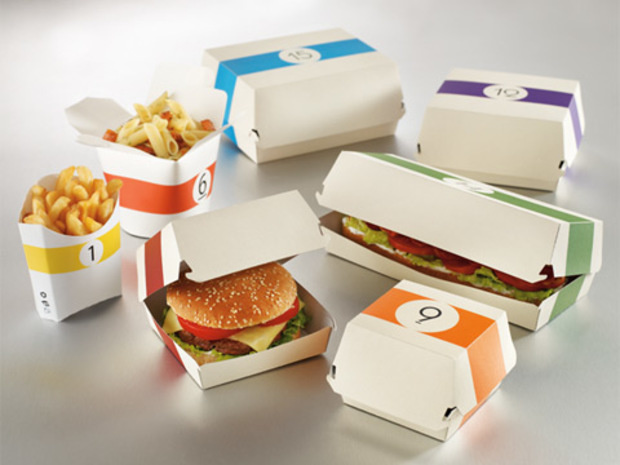In the fast-paced world of food service, the humble fast food boxes often go unnoticed. Yet, it plays a pivotal role in shaping the customer experience, protecting the product, and projecting the brand image. This seemingly simple packaging solution is a complex interplay of design, functionality, and sustainability.
The Crucial Role of Fast Food Boxes
- Product Protection: Fast food boxes are the first line of defense against spills, contamination, and temperature fluctuations. They ensure food reaches the customer in optimal condition.
- Brand Identity: A fast food box is a miniature billboard, reflecting the brand’s personality and values. Consistent design reinforces brand recognition.
- Customer Experience: The box is the customer’s first interaction with the food. Its design, functionality, and ease of use significantly impact the overall experience.
- Marketing Tool: Fast food boxes can be used for promotions, limited editions, and seasonal campaigns. They can also provide essential product information.
Types of Fast Food Boxes
The fast food industry offers a diverse range of products, necessitating various box types:
- Burger Boxes: Designed to hold burgers, these boxes often include compartments for fries or other sides.
- Fry Boxes: Used for serving fries, these boxes come in different sizes and shapes to accommodate various portion sizes.
- Chicken Boxes: Designed for chicken tenders, nuggets, or wings, these boxes often have multiple compartments.
- Sandwich Boxes: Used for sandwiches, wraps, or subs, these boxes prioritize product protection and ease of consumption.
- Pizza Boxes: While technically different, pizza boxes are essential for delivering this popular food item.
The Science Behind Fast Food Packaging
Fast food packaging involves a complex interplay of factors:
- Material Selection: The choice of material (cardboard, kraft paper, coated paper) affects the box’s strength, durability, and recyclability.
- Grease Resistance: Fast food often involves greasy items, so the box must be resistant to oil and grease.
- Heat Retention: For hot food, the box should help maintain temperature while preventing condensation.
- Ventilation: Adequate ventilation is essential to prevent the buildup of steam and condensation.
- Food Safety: The box must comply with food safety regulations and be free from harmful chemicals.
Design Considerations for Fast Food Boxes
A well-designed fast food box is both functional and aesthetically pleasing.
- Size and Shape: The box should be the perfect fit for the food it contains, allowing for easy handling and consumption.
- Structural Integrity: Burger box must be sturdy enough to withstand transportation and handling without collapsing.
- Design: The design should align with the brand’s identity and appeal to the target audience.
- Functionality: The box should be easy to open, close, and hold.
- Sustainability: Consider using recycled materials or eco-friendly printing options.
Fast Food Box Design Trends
The fast food industry is constantly evolving, and packaging trends follow suit.
- Minimalist Design: Clean lines, simple typography, and a focus on high-quality materials.
- Sustainable Packaging: Eco-friendly materials, recyclable or compostable options.
- Interactive Packaging: Adding games, puzzles, or augmented reality experiences to the box.
- Personalized Packaging: Offering customers the option to customize their boxes.
- Transparency: Window cutouts or clear panels to showcase the food.
The Impact of Fast Food Boxes on Brand Perception
A well-designed fast food box can significantly influence how consumers perceive a brand.
- Increased Perceived Value: A high-quality box can elevate the perceived value of the food.
- Brand Loyalty: A consistent and appealing packaging experience can foster customer loyalty.
- Sales Increase: A visually appealing box can entice customers to purchase.
- Waste Reduction: Sustainable packaging can improve a brand’s environmental image.
Fast Food Boxes and Sustainability
Consumers are increasingly concerned about environmental impact. Fast food chains are responding by adopting sustainable packaging practices.
- Recycled Materials: Using recycled cardboard or paper for boxes.
- Biodegradable Materials: Exploring plant-based alternatives to traditional packaging.
- Reducing Packaging: Minimizing the amount of packaging material used.
- Recycling Initiatives: Encouraging customers to recycle their boxes.
The Future of Fast Food Boxes
The future of fast food packaging is likely to be characterized by innovation, sustainability, and consumer-centric design.
- Smart Packaging: Incorporating technology to provide product information, track food safety, or enhance the customer experience.
- Edible Packaging: Exploring edible or biodegradable packaging materials.
- Personalized Packaging: Offering customized boxes based on customer preferences.
- Circular Economy: Designing packaging that can be reused or recycled effectively.
Conclusion
Hot dog boxes are more than just containers; they are essential components of the fast food experience. By carefully considering design, functionality, and sustainability, fast food chains can create packaging that not only protects their products but also enhances their brand image and contributes to a positive customer experience.
OPTIFINE Study Table/Bed Table/Foldable and Portable Wooden/Writing Desk for Office/Home/School (Black-COTTED-Black)
₹459.00 (as of 11 January, 2025 11:30 GMT +05:30 - More infoProduct prices and availability are accurate as of the date/time indicated and are subject to change. Any price and availability information displayed on [relevant Amazon Site(s), as applicable] at the time of purchase will apply to the purchase of this product.)2 Pcs Kitchen Mats, Waterproof Memory Foam Kitchen Rugs, Standing Desk Mat Floor Mats, Comfort Runner Rug Carpets for Kitchen Floor, Sink (c)
₹548.00 (as of 11 January, 2025 11:30 GMT +05:30 - More infoProduct prices and availability are accurate as of the date/time indicated and are subject to change. Any price and availability information displayed on [relevant Amazon Site(s), as applicable] at the time of purchase will apply to the purchase of this product.)Desi BAE Kitchen Utensil Dish Drying Mat | Quick Dry Water Absorbent mat | Placemat for Dish Drying with Non-Slip Rubber Backed | Super Draining Mat for Kitchen (1)
₹179.00 (as of 11 January, 2025 11:30 GMT +05:30 - More infoProduct prices and availability are accurate as of the date/time indicated and are subject to change. Any price and availability information displayed on [relevant Amazon Site(s), as applicable] at the time of purchase will apply to the purchase of this product.)Orpat OEH-1220 2000-Watt Fan Heater (White)
₹1,249.00 (as of 11 January, 2025 11:26 GMT +05:30 - More infoProduct prices and availability are accurate as of the date/time indicated and are subject to change. Any price and availability information displayed on [relevant Amazon Site(s), as applicable] at the time of purchase will apply to the purchase of this product.)Amazon Brand - Solimo Heavy-Duty Adhesive Wall Photo Frame Hooks | for Hanging Clothes, Hats, Keys, and More (Pack of 10)
₹121.29 (as of 11 January, 2025 11:30 GMT +05:30 - More infoProduct prices and availability are accurate as of the date/time indicated and are subject to change. Any price and availability information displayed on [relevant Amazon Site(s), as applicable] at the time of purchase will apply to the purchase of this product.)Discover more from The General Post
Subscribe to get the latest posts sent to your email.





